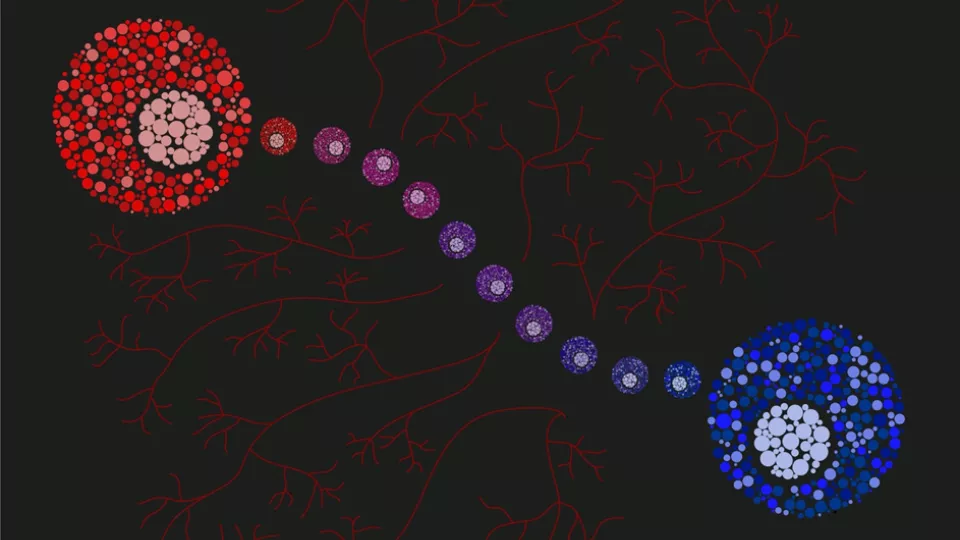The body makes several million blood cells every second. This incredibly complex process is tightly controlled by hematopoietic stem and progenitor cells, whose job it is to establish and maintain the blood system throughout life.
There are several key differences between the blood stem and progenitor cells formed during early life and in the adult. Examples of these include the higher division rate of fetal progenitors - enabling them to quickly form the new blood system - and the ability of adult progenitors to differentiate into the various mature blood cell types, performing the functions necessary for our survival.
The Proteomic Hematology group, led by Dr Jenny Hansson, aims to understand the molecular differences between early life and adult blood stem and progenitor cells and how these may explain their varied functions.
“This research is not only important for a greater understanding how the blood system functions, but also for identifying the mechanisms that if disrupted may lead to the development of cancer with age-associated differences,” explains Dr Hansson.
The research team is focused on the role of proteins – the machinery necessary for the cell to perform its various functions – in blood formation. Using state-of-the-art technology known as mass spectrometry–based quantitative proteomics, they have been able to compare the proteomes (the protein content) of blood progenitors during early life and adulthood. Alongside with a detailed and systematic comparison of the cells’ functional properties they have linked the protein signatures to previously unknown developmental differences in cellular functionality.
“In this study, we developed a workflow that allows us to decrease the number of cells needed to run our proteomic experiments by five-fold,” explains Maria Jassinskaja, a PhD student in the Hansson group and lead author of the paper. This advancement allows the researchers to take a closer look at the molecular mechanisms regulating rare blood progenitor cells in greater detail than ever before.
Using this approach, the research team identified over 4000 proteins, many of which were differentially expressed between fetal and adult progenitors. They observed that whilst the protein signatures of adult blood formation are generally quite conserved across different types of progenitors, there is much more variation between that of fetal progenitors.
Surprisingly, some of the proteins that varied most between fetal and adult progenitors was a family known as myosins, best known for their role in muscle contraction and important for cell motility. Specific members of this family have also reported to be involved in tumor formation and invasion and targeting these proteins has been shown to selectively kill leukemia cells. The functional assays in the new study highlighted a potential developmental-specific sensitivity to disruption of myosin activity in blood progenitors.
“We were also able to identify clear differences in the abilities of fetal and adult immature blood cells to generate specific mature and differentiated cell types,” continues Maria. These include a diminished capacity of fetal progenitors to produce granulocytes – a type of white blood cell that helps the body fight bacterial infections.
In addition, the researchers showed that adult progenitors are more capable of generating monocytes – a precursor to a number of cell types important for immune response – and that this was partially due to a higher expression of the transcription factor Irf8 in adult relative to fetal blood progenitors.
“In this study, we have identified a host of target proteins that we will focus on to develop age-tailored therapeutic approaches for improving the clinical outcomes of infant and adult leukemia patients,” concludes Dr Hansson.
The study received major support from the Swedish Research Council and the Swedish Childhood Cancer Foundation.




